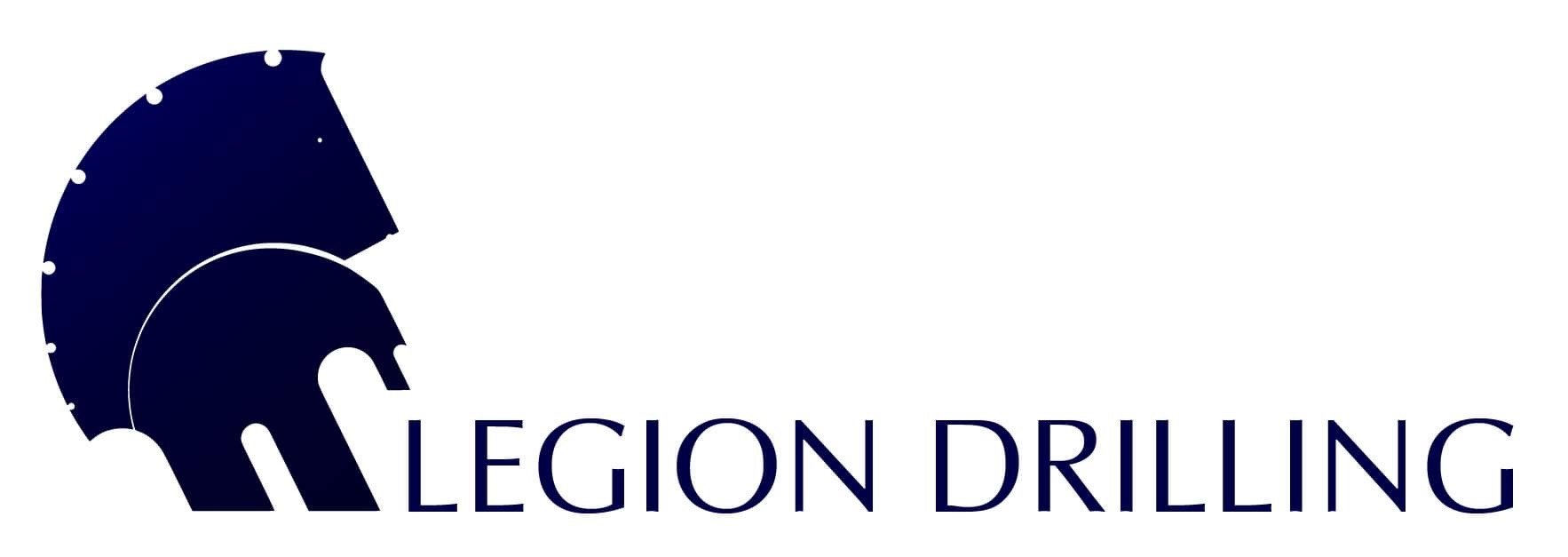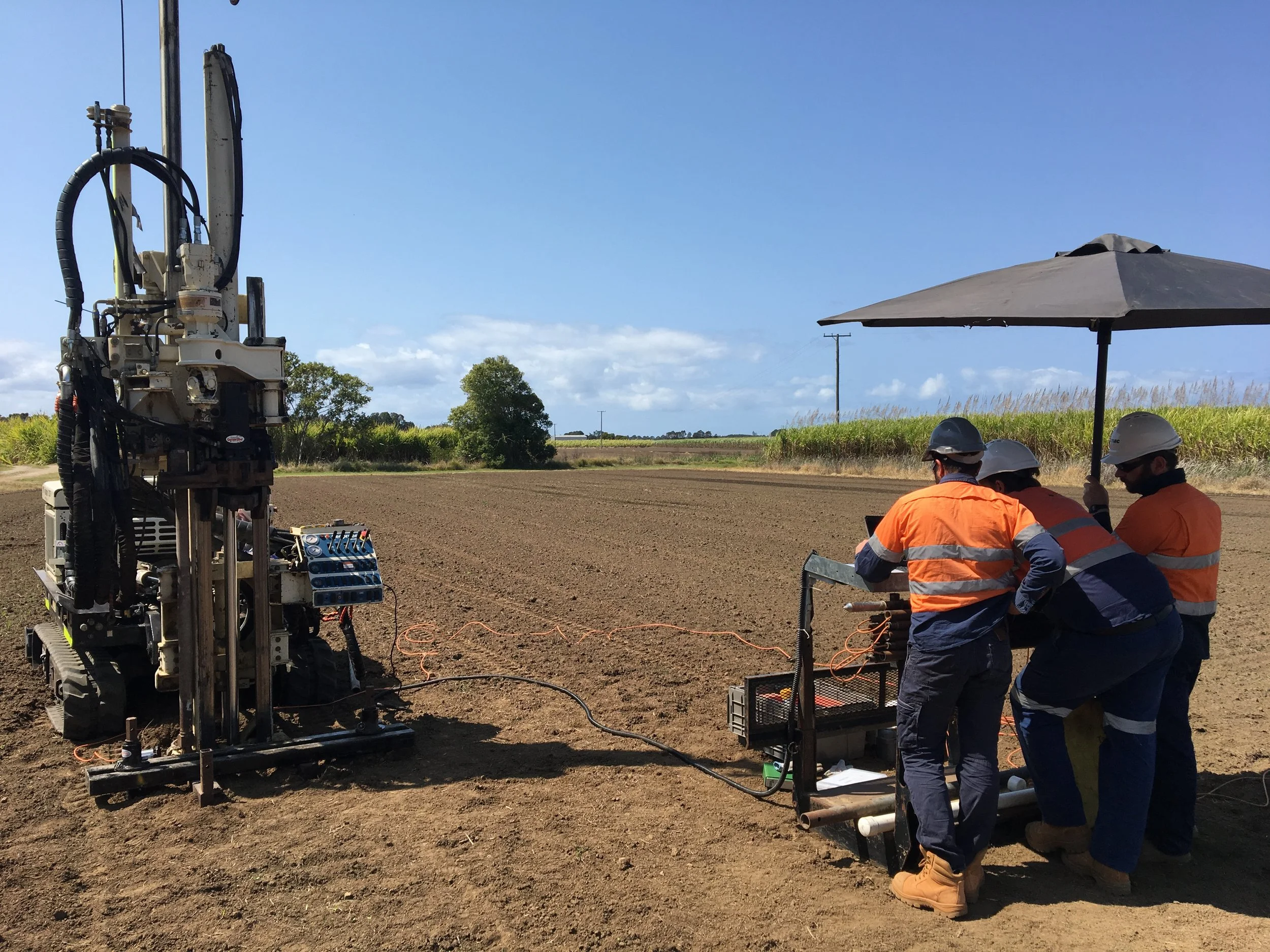Laser-Induced Fluorescence (LIF) Technology
ULTRA-VIOLET OPTICAL SCREENING TOOL (UVOST) FOR LNAPL DELINEATION
UVOST is arguably the most powerful tool available for the delineation of petroleum hydrocarbon LNAPLs such as free-phase gasoline/petrol, diesel, kerosene-type jet fuel, and crude oil. It is a Laser-Induced Fluorescence (LIF) system enabling rapid identification of fluorescent molecules such as polycyclic aromatic hydrocarbons (PAHs) at centimetre scale. Additionally, it provides information about the type of LNAPL, weathering degree, and certain subsurface characteristics.
The application of UVOST is generally encouraged in sites impacted by light petroleum hydrocarbons. Too often, the presence of LNAPL in soil and groundwater (particularly below the water table) is overlooked by conventional investigation methods, thus leading to poor remediation performance, inadequate protection of receptors, and inefficient site management strategies.
Furthermore, the application of direct sensing tools typically leads to significant cost savings in the investigation phase itself thanks to the reduction in the number of laboratory analyses, the number of field campaigns required to ‘fill gaps’, and the minimal investigation-derived waste (IDW).
MAJOR BENEFITS
Direct sensing tools such as UVOST provide the site characterisation professional with information to build a conceptual site model at unprecedented speed, detail, and efficiency. Traditional soil and groundwater sampling techniques simply cannot compete with UVOST’s production rates or density of data.
LIF logging is a mature approach that has been successfully applied worldwide for ~30 years.
Rapid identification of LNAPLs, including residual, entrapped, and any other non-recoverable LNAPL fraction not observed in monitoring wells. LIF does not generally respond to dissolved, sorbed or vapour-phase VOCs.
Precise delineation of LNAPL source zones overcoming limitations typically associated to conventional coring such as low sampling resolution, partial core recovery, and fluid redistribution.
Real-time data visualisation capabilities allowing for adaptive field plans and reduced project durations.
Enhanced insight obtained by collating multiple logs in cross sections and creating 3D models.
Typical LIF production is 60–100+ m/day.
Analysis of multi-wavelength waveforms enable differentiation of LNAPL type, weathering degree, and subsurface conditions across the site.
UVOST guides and complements the application of more costly characterisation and remediation methods, thus leading to cost-effective and sustainable solutions.
Minimal investigation-derived waste (IDW).
Legion Drilling are pioneers delivering High-Resolution Site Characterisation (HRSC) services in Australia with almost 10 years of experience. The equipment is mobilised from our locations in Brisbane, Sydney and Townsville.
THE POWER OF LASER-INDUCED FLUORESCENCE (LIF) TECHNOLOGY
LIF systems used for the assessment of contaminated sites employ a laser source to excite molecules (fluorophores) found in subsurface contaminants and environmental dyes. These molecules have characteristic absorption and emission spectra and therefore their analysis allows identification of specific compounds and inference of properties of complex chemical mixtures such as petroleum fuels.
As the LIF probe is advanced into the subsurface with a direct push rig at 1–2 cm/s, the laser source emits light pulses. In the case of UVOST, these pulses are transmitted via fiber optics to the geological medium through a sapphire window installed in the probe. The response (fluorescence intensity and lifetime) is measured at four wavelengths (350 nm, 400 nm, 450 nm, and 500 nm) and subsequently processed to build multi-wavelength waveforms and a near-continuous profile displaying the total LIF response (colour-coded) versus depth.
ADVANCED LOG INTERPRETATION TO SUPPORT OUR CLIENTS AUSTRALIA WIDE
By analysing the multi-wavelength waveforms obtained, our experienced direct sensing technicians can help you to identify intervals impacted by LNAPL and differentiate LNAPL types even when the UVOST response is low or the natural fluorescence of the geological medium is strong.
LIF response is influenced by many parameters, including:
NAPL characteristics (type, weathering degree, saturation, distribution).
Geological characteristics (mineralogy, particle size, colour, organic matter, geochemical conditions).
For instance, PAHs with low number of rings preferentially fluoresce in channels corresponding to low wavelengths. Thus, fresh petrol typically exhibits a blue-shifted signature with predominant response in the 350-nm channel. On the contrary, weathered petrol (due to the depletion of small PAHs) or crude oil show greater response at longer wavelengths.
The analysis of lifetime data is essential. For example, diesel typically exhibits a short-long-long-long lifetime pattern, while the natural fluoresce of geological media (which is sometimes strong, for instance in settings with calcareous sands) commonly display negligible lifetimes. Short lifetimes may also reflect environments rich in oxygen (due to oxygen quenching phenomena).
LEGION DRILLING WEBINARS WITH DAKOTA TECHNOLOGIES
Randy St. Germain from Dakota Technologies presented these technical sessions in April 2021. They are part of our series of webinars on advanced site characterisation and remediation.
FAQs
What contaminants can be detected with UVOST?
Mainly petroleum LNAPLs containing PAHs such as free-phase gasoline/petrol, diesel, kerosene-type jet fuel, and crude oil.
Legion Drilling also provides the Membrane-Interface & Hydraulic Profiling Tool (MiHPT), which can be considered for delineating halogenated (e.g. chlorinated, brominated) DNAPLs.
For bunker and coal tar, we recommend using high-resolution core sampling or the Tar-specific Green Optical Screening Tool (TarGOST). Additionally, Dye-enhanced Laser-Induced Fluorescence (DyeLIF) can be used for non-fluorescing NAPLs. Legion Drilling can provide these tools for large projects.
What subsurface conditions are favourable for the application of UVOST?
Any subsurface setting suitable for direct push drilling can be investigated with UVOST. The maximum investigation depth is theoretically ~30 m below ground surface, although it totally depends on the site conditions. Contact us to discuss the potential maximum investigation depth in your site.
Additionally, relatively homogeneous, coarse-textured sedimentary environments with low natural fluorescence may be easier to interpret, but our direct sensing technicians can assist you in the analysis of more complex (and entertaining!) systems.
If required, Legion Drilling provides concrete coring as well as alternative investigation approaches for fractured bedrock.
Can UVOST be used to delineate source zones?
Definitely. UVOST may be the most powerful tool available for delineating LNAPL source zones in unconsolidated aquifers. In the case of DNAPL source zones, other methods such as MiHPT, TarGOST, DyeLIF, and conventional sampling should be considered.
What are the key points to keep in mind to successfully conduct a HRSC campaign?
Be ready to adapt and optimise your field plan as you receive direct sensing data. Our direct sensing technicians will be available to discuss any project-specific details prior to the field campaign and can assist you interpreting logs on real time.
We will carry not just a UVOST probe but also a Membrane-Interface & Hydraulic Profiling Tool (MiHPT) for hydrostratigraphic characterisation (including determination of preferential migration pathways, low-permeability zones, and hydraulic conductivity values) and delineation of VOCs (dissolved, sorbed, and volatilised). Thus, for the same cost you can combine the application of both tools according to your project objectives. Furthermore, we have an arsenal of drilling and sampling equipment for collection of soil, groundwater, and vapour samples as well as installation of wells for monitoring and remediation purposes.
An elevation survey should be conducted to enable comparison between multiple logs and proper interpretation of cross sections and 3D models.
We encourage you to measure in-well fluid levels in adjacent locations immediately prior to the HRSC works to interpret the logs with less uncertainties.
An HRSC campaign will give you a detailed snapshot of your contaminated site. Understand the site dynamics to put it into context (site hydrographs and assessments of LNAPL mobility and NSZD may be particularly insightful) and confidently move your site forward to remediation and/or closure.
And don’t forget to locate all the subsurface infrastructure and utility lines prior to any drilling works!
Where can I find more information?
Please, contact our HRSC manager (jonas.garciarincon@legiondrilling.com.au) if you want to receive further information or discuss in detail any specific project requirements.
In the meantime, we recommend you to consult the following documents:
García-Rincón, J., Gatsios, E., Rayner, J. L., McLaughlan, R. G., & Davis, G. B. (2020). Laser-induced fluorescence logging as a high-resolution characterisation tool to assess LNAPL mobility. Science of The Total Environment, 138480.
ITRC (2019). Implementing advanced site characterization tools. ASCT-1. Washington, D.C.: Interstate Technology & Regulatory Council, Advanced Site Characterization Tools Team. https://asct-1.itrcweb.org
UVOST investigation with Geoprobe on the Gold Coast QLD.




